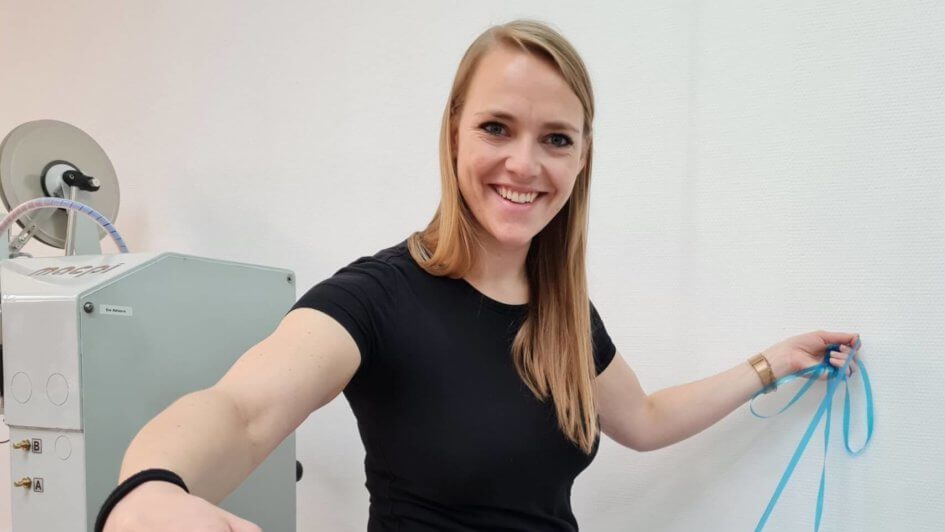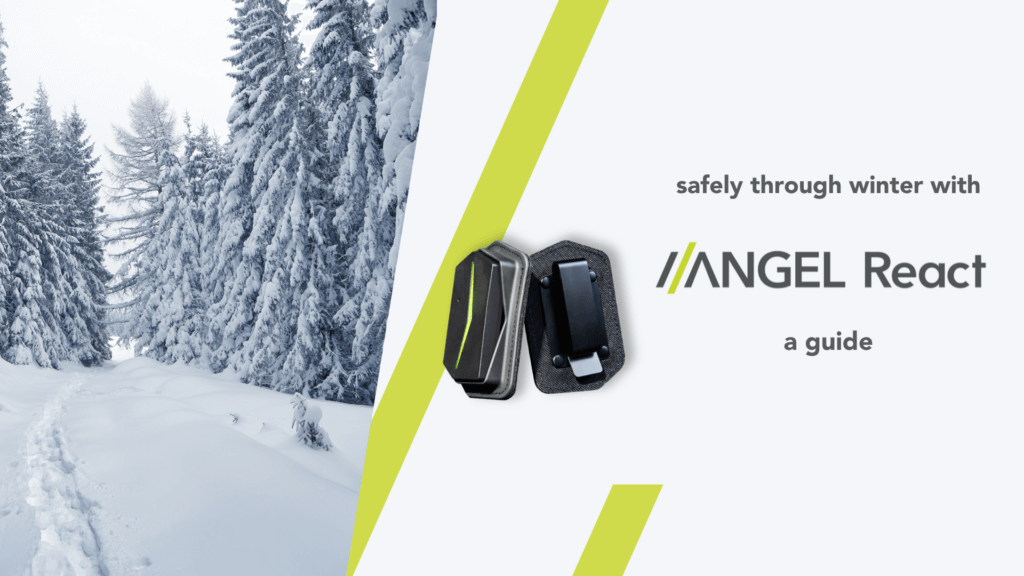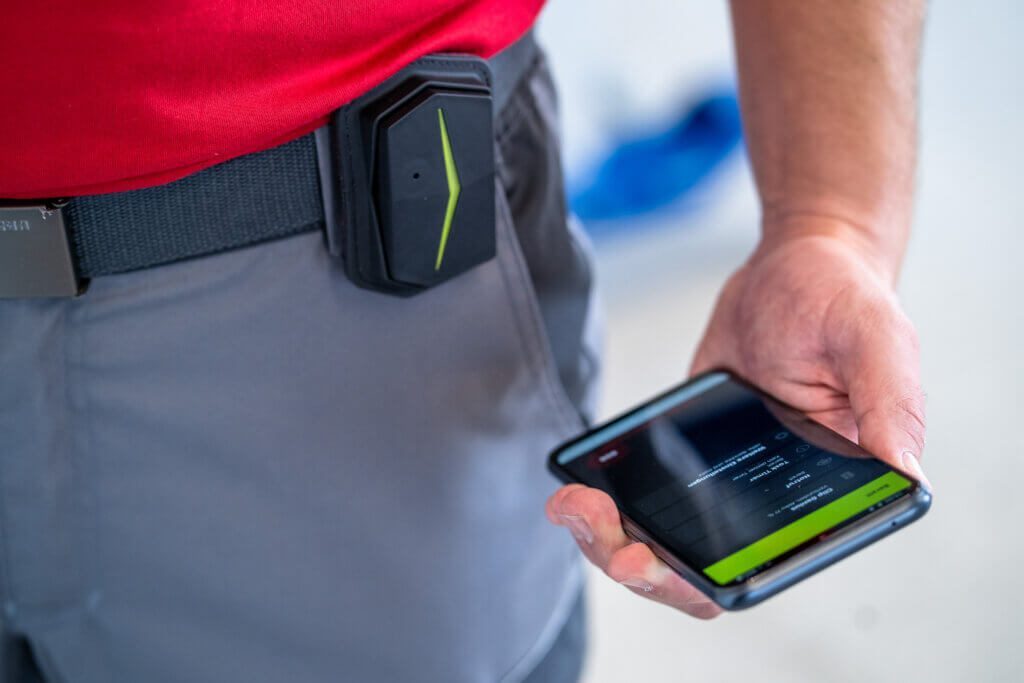Proving every day
Silke defines: To be suitable for everyday use, the ANGEL shirt must have a comfortable cut and be made from cotton. This material is usually required in the electrical industry because one can wear it well under flame-resistant protective clothing. The cuffs on the upper arms of the ANGEL shirt must not cut in, but the electrodes must still be well-positioned. That’s why different upper arm sizes for the shirts are necessary. Besides, the ANGEL shirt’s built-in electrodes and sensitive connection points must withstand at least 50 washes. “Washing combines several challenges at the same time. Temperature, chemicals, and mechanical effects — and all of this over a long period,” explains Silke. ANGEL is nevertheless a smart textile shirt that does not need a gentle cycle.
Going into series production
There are many and exciting prototypes in the smart textile industry. But it quickly becomes apparent that they cannot yet step into series production because they are too complex to manufacture, not washable, or are simply too expensive. The customers are willing to pay a certain price for a smart textile shirt, but not an infinite amount.
To offer the ANGEL shirts at a reasonable price, we had to optimize the production processes. “Our electronic components require electrical interconnections in some places and absolute isolation in others. This is a challenge in series production,” says Silke. Smart components can be easily attached to the shirts with thermal presses, but these presses have been used and tested primarily for logo printing. There, it’s all about looks, “whereas for us, it’s about electrical functionality, everything has to be connected in a stable and process-safe way.”
So far, everything has worked out, and the first almost 2000 ANGEL shirts have rolled off the production line as planned: “Made in Europe” — that is important to ADRESYS.
Pioneering
Silke contributes the knowledge about smart textiles generated during the development of the ANGEL system to the Textile Committee of Austrian Standards and the Working Group for Smart Textiles at CEN, the European Committee for Standardization. ADRESYS’ PATCH project also aims to bring new knowledge to the outside world. “Our methods are also interesting for other systems,” explains Silke. “How do you insulate a textile conductor? How do you ensure that electrodes have the best possible skin contact, regardless of the nature of the skin or body hair?” For the medical sector, for example, knowing how to best attach a data processing unit to a smart textile shirt could be well of interest.
Looking into the future
The launch of the ANGEL system is scheduled for September, and ideas for new developments are already on the horizon. Long sleeves are mandatory in the high-voltage sector, for example. How and where should the electrodes be attached to such a shirt? And can the ANGEL system also be built into flame-resistant fabric?
The smart textile sector is only just beginning — and ANGEL is now also part of it.




 ANGEL React & ADRESYS
ANGEL React & ADRESYS  ANGEL React & ADRESYS
ANGEL React & ADRESYS  ANGEL React & ADRESYS
ANGEL React & ADRESYS